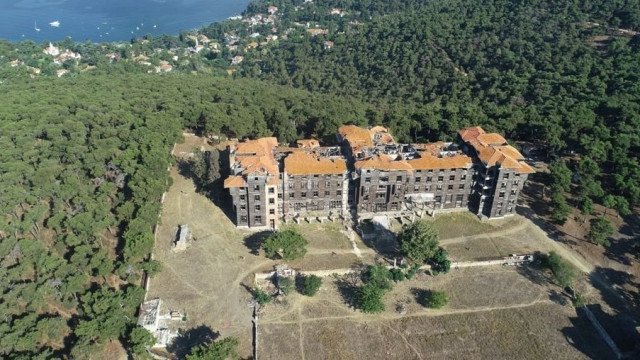Istanbul Buyukada Orphanage (DHA)
The Greek orphanage on the island of Buyukada in Istanbul will be restored after experts completed a study of the building after long delays.
The historic structure, dubbed the largest wooden building in Europe, will require about 20m euros for restoration.
Nazam Akkoyunlu, deputy manager of BIMTAŞ, an engineering company run by the Istanbul Municipality (IBB) that carried out the surveying, said the building needed a quick restoration, but that it would require a “big budget”. A local council for the preservation of historic buildings is currently investigating the condition of the building and is expected to approve the restoration.
The building, originally known as the Greek orphanage Prinkipo, was included in a list of endangered cultural heritage sites identified by Europa Nostra, a European cultural heritage organization, amid years of negligence and exposure to adverse weather conditions.
Despite the damage caused by a fire in 1980, the 20,000-square-foot wooden building stands firm, although parts of the roof and corner posts have since collapsed.
Europa Nostra called for at least an immediate partial refurbishment of the building.
Prior to being turned into an orphanage, the building was originally a casino and hotel built by the Compagnie des Wagons-Lits, the travel company that operated the legendary Orient Express luxury train.
The building was designed by Alexander Valuri, the Franco-Ottoman architect who also gave the appearance of Istanbul’s historic Pera Palace Hotel.
The building was completed in 1898, but the sultan refused to grant it a casino license. Eventually, the building, owned by a wealthy Greek family, was donated to the Ecumenical Orthodox Patriarchate of Fener, based in Istanbul. Thus the colossal wooden building opened its doors as an orphanage for Greek children in 1903.
The building was confiscated by the government during the First World War and was used as housing for cadets and troops of the military ally of the empire, Germany.
After the war, it again served as an orphanage, but was ordered to be evacuated in 1964 during intensified ethnic tensions between Turks and Greeks. The building was completely closed in 1977.
The patriarchate won a long court battle in 2010 for the return of the property.
In 2020, the building, which once housed about 6,000 orphans from the Greek community in Turkey, began research work that will precede the restoration. Teams mapped the original characteristics and dimensions of the orphanage.
Akkoyunlu told the Demiroren news agency that their work, in coordination with the patriarchate, used laser imaging technology and was able to reproduce the “exact condition” of the building.












